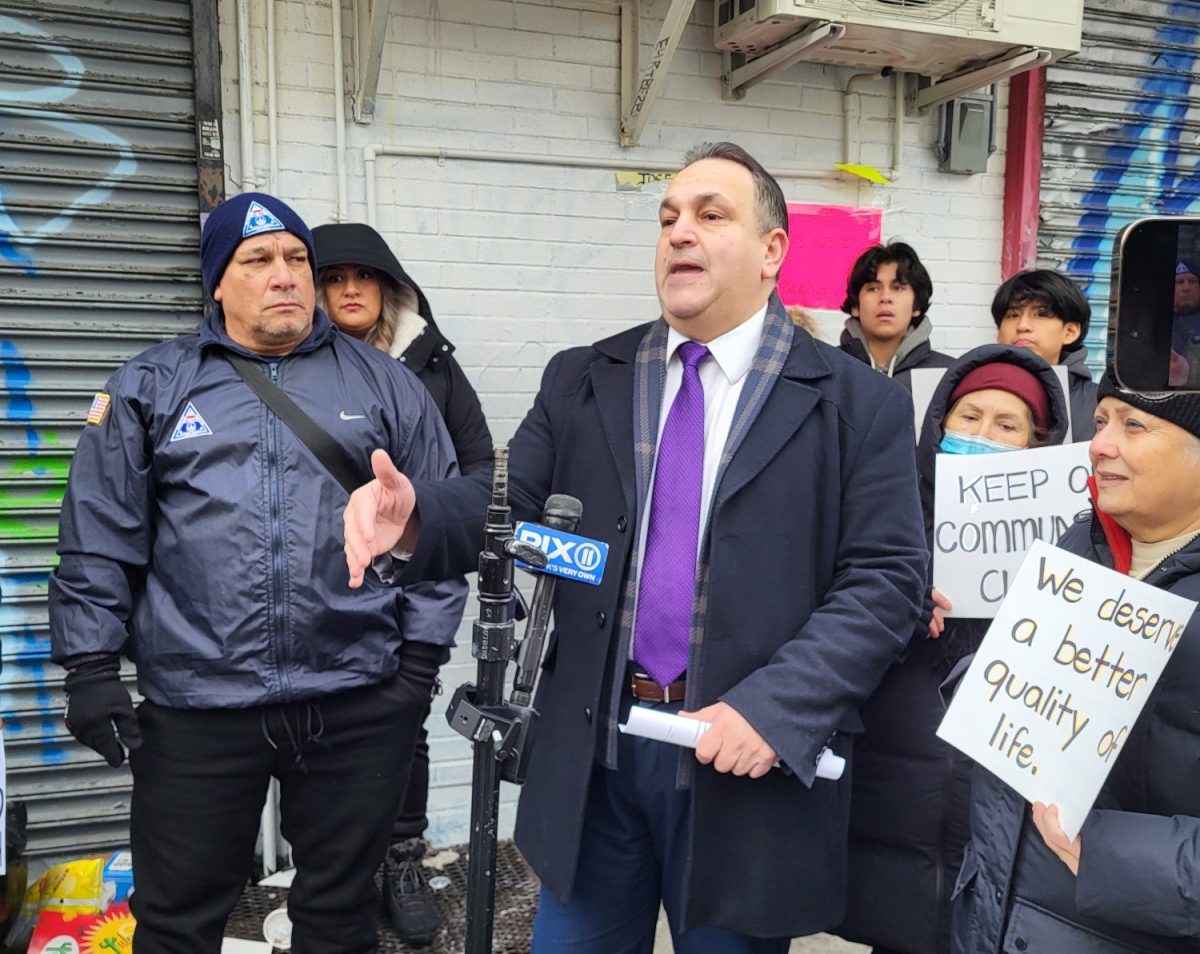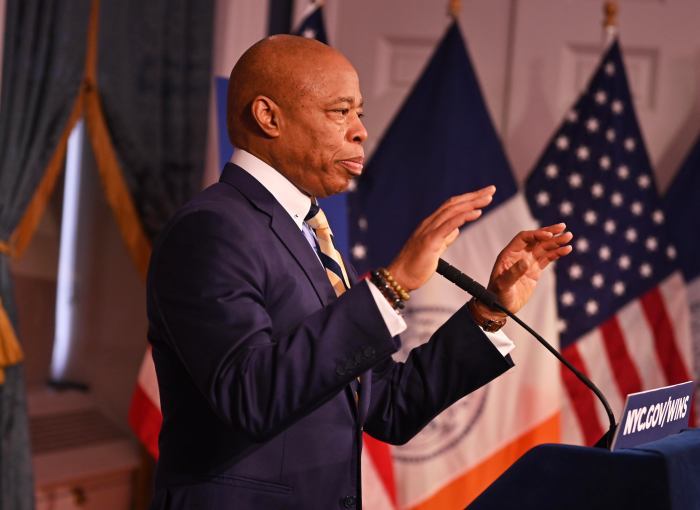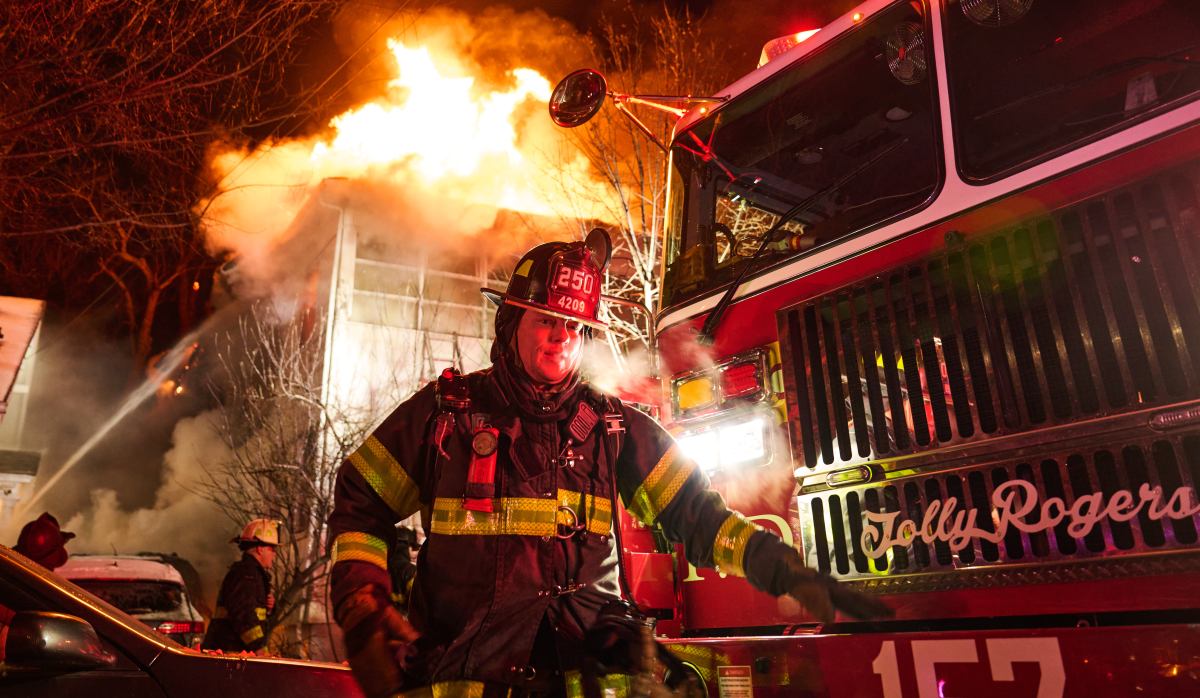
As the de Blasio administration prepares to make its first Rikers Island closure this summer, the city is leading the way in diminishing the overuse of jails in the criminal justice system while reducing crime at the same time, according to one expert, but there is still a long way to go in achieving the mayor’s 10-year goal of shuttering the violence-plagued complex for good.
“Closing Rikers is really important but there are other issues that need to be addressed first,” said JoAnne Page, president and CEO of the Fortune Society, a nonprofit that advocates for the formerly incarcerated.
Without solving the problems that create a culture of violence and corruption within Rikers, Page said she fears the issues will simply be transplanted into the new system of smaller, community-based jails outlined by Mayor Bill de Blasio in March.
Even with the planned closure of the George Motchan Detention Center, which currently houses about 600 men awaiting trial, Page expressed concern that the overarching time frame may diminish the spotlight on reducing jail populations – even as the city experienced an annual 5.4 percent drop in serious crime in 2017.
“I think it’s truly wonderful,” she said of closing the George Motchan Detention Center. “But there are much heavier lifts that are coming. And one of the heaviest lifts will be creating the [community-based jails].”
In order to truly affect change within the city’s criminal justice system, Page said several key steps need to be taken.
Reducing the city’s jail population
In order for Rikers to fully close, the city needs to reduce its jail population to 5,000, according to the mayor’s office.
The de Blasio administration has already made strides on that front, announcing in December that the monthly average population at the jail complex had dropped below 9,000 for the first time in 35 years.
Page partially attributed the decrease to ending the controversial stop-and-frisk program. A federal judge in 2013 had ruled that the initiative violated the constitutional rights of minorities.
“I’m grateful to the mayor for bringing down the stop-frisk number,” Page said, adding that the program disproportionately targeted minorities and pulled them into the criminal justice system.
Jail should be “the last alternative,” according to Page. Instead, the city should focus more on diversion programs, an increase in pretrial supervised release and less reliance on cash bail for low-level crime.
“I think where we should be working from, is that you use the least restrictive means necessary to get people to court,” Page added. “Not having a phone or a family member to come are reasons people get sent to jail, and that can be remedied.”
The de Blasio administration, which called December’s jail population a “major milestone,” attributed the drop to several initiatives – a decrease in low-level crime arrests, the citywide supervised release program and expanded diversion programs among them.
Reducing the length of stay & case processing time
“Case processing has gotten longer and longer,” Page said, pointing to the Kalief Browder case as a prime example of why more reforms are needed in order to close Rikers.
Browder, who died in 2015, was arrested in 2010 for allegedly punching a man and stealing his backpack when he was 16 years old, and spent three years at Rikers before his case was dismissed. De Blasio has said Browder’s experience helped inspire jail reform efforts.
“If you take a plea to a minor case, you can get out of Rikers much faster than if you fight it – whether you did the crime or not,” Page said.
The longer a person stays in jail, the greater the incentive is to plead guilty, which creates collateral consequences on their future job prospects, housing, etc., according to Page. Capping how long cases can go on and putting pressure on the system to speed up case processing will help move Rikers toward the 5,000-population goal while also reducing the impact the criminal justice system can have on individuals, she added.
Eliminating cash bail on misdemeanors, a move proposed by Gov. Andrew Cuomo in his State of the State address, would be a step in the right direction, Page said.
Addressing the conditions and climate of violence
“Rikers is terribly important because we know how bad it is,” Page said. “We also know some things about how to create environments that are better than what Rikers is.”
Rikers has gained notoriety over the past few years for its culture of violence and corruption, including attacks on and by correction officers and a number of inmate deaths.
Removing the most vulnerable populations from a very dangerous environment – kids, women and mentally ill people – is a key part, but there are other factors to be considered as well.
“If all we do is transplant the same culture . . . the same DOC with the same training, we’re going to recreate the same culture that’s at Rikers,” Page said. “There are things that need to be done to change that.”
The size of the institution (moving from Rikers to smaller, community jails), how Department of Correction officers are trained, and what inmate behaviors are being incentivized can helps shift the culture in a better direction, Page said.
Reducing recidivism
As crime rates continue to drop, reducing the rate of formerly incarcerated people returning to jail will help the city move closer toward shutting Rikers down.
One way to achieve this is to increase the services inmates have access to, especially for those with mental health issues.
“In terms of going back, some of the most vulnerable people are the ones with mental illness,” Page said.
Other key drivers to recidivism include addiction, socio-economic status and lack of housing.
Having people strongly linked to substance abuse programs and mental help is crucial in reducing recidivism. Transitional work is also “big and important,” Page said, because it will link them to services as well as sources of income.
“We are seeing more services happen on Rikers, and that’s really important,” she added.
Additionally, the smaller jails meant to replace Rikers could more easily provide services to inmates.
Making sure closing Rikers continues to be a priority
De Blasio’s plan to close the jail complex is expected to take 10 years and puts the onus of picking where the smaller jails will be located on the City Council.
Although advocates are pleased that de Blasio is on board with closing the complex, many have expressed serious concerns about handing the execution off to another mayor and saddling City Council members with a project that will likely draw demands of “not in my backyard” from their constituents.
“It’s been pushed down the road and it’s really important that it doesn’t keep getting pushed down the road,” Page said of the community-based jails.
Pushing for the closure of Rikers has picked up speed in recent years, Page said, but it’s critical that advocates don’t allow politics or too much time to get in the way.


































